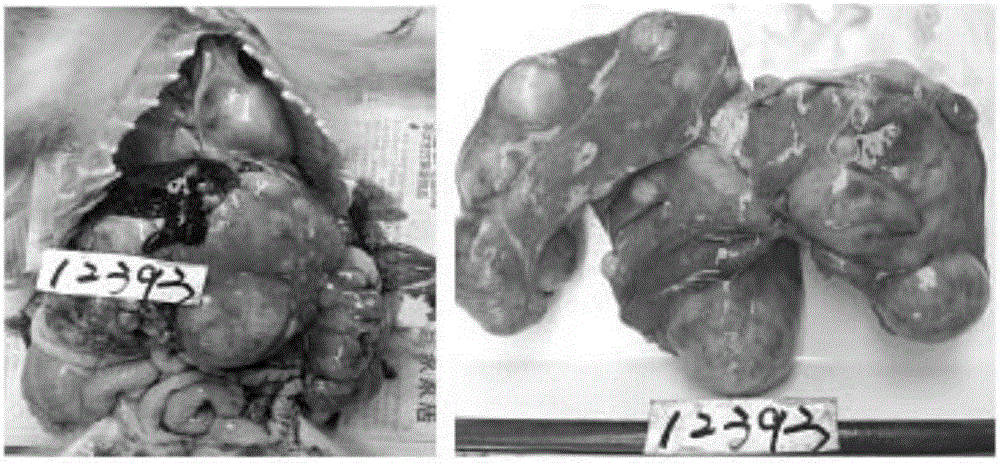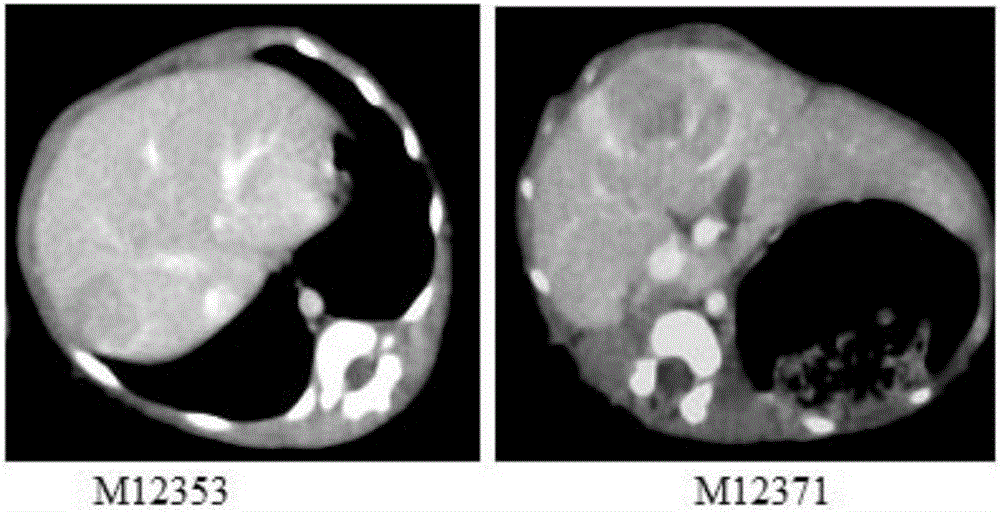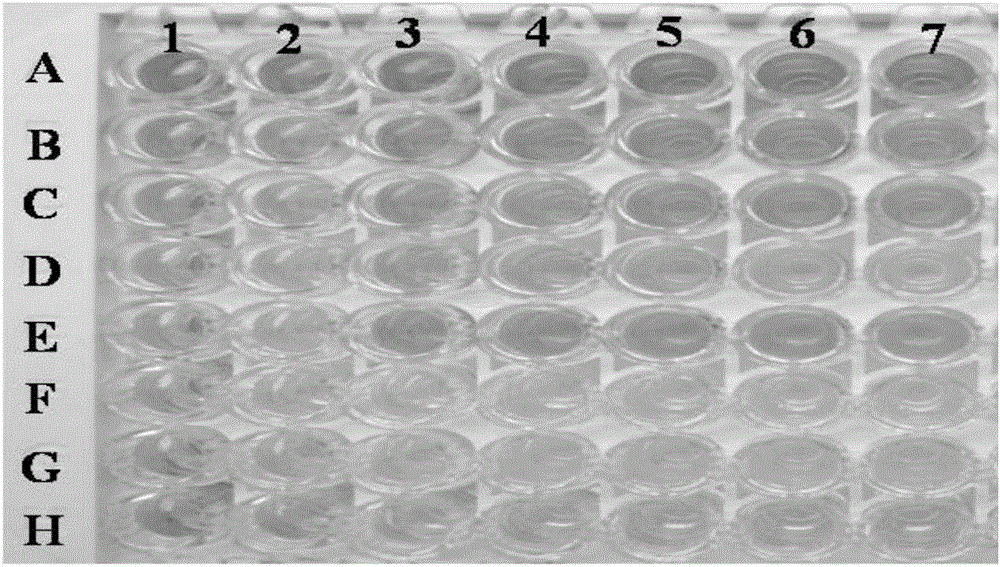Macaca mulatta hepatocellular carcinoma model, macaca mulatta hepatocellular carcinoma cell line and application of macaca mulatta hepatocellular carcinoma model and macaca mulatta hepatocellular carcinoma cell line
A technology of liver cancer cells and rhesus monkeys, applied to preparations for in vivo experiments, medical preparations containing active ingredients, organic active ingredients, etc.
- Summary
- Abstract
- Description
- Claims
- Application Information
AI Technical Summary
Problems solved by technology
Method used
Image
Examples
Embodiment 1
[0037] The preparation of embodiment 1 animal model of the present invention
[0038] 1. Materials and methods:
[0039] 1.1 Experimental materials
[0040] Six healthy rhesus monkeys within one week of birth, male, weighing 0.5-0.8 kg, were purchased from Chengdu Greenhouse Biotechnology Co., Ltd.
[0041] 1.2 Main reagents
[0042] Diethylnitrosamine: purchased from Sigma Company.
[0043] Normal saline was purchased from Southwest Pharmaceutical Co., Ltd.).
[0044] 1.3 Preparation of the main solution
[0045] Preparation of diethylnitrosamine solution:
[0046] Take 25ml of DENA stock solution (Sigma), add 75ml of physiological saline for injection, and prepare 20% DENA aqueous solution, and store it in the dark for future use.
[0047] 1.4 Main Instruments
[0048] Disposable medical sterile syringes: purchased from Sichuan Shuanglu Medical Instrument Co., Ltd.
[0049] 1.5 Modeling method
[0050] Intraperitoneal injection of 20% DENA aqueous solution, 40 mg / kg...
Embodiment 2
[0076] Example 2 Establishment of rhesus monkey liver cancer cell line M12353
[0077] 1. Experimental method
[0078] 1. Rhesus macaque hepatocellular carcinoma tissue xenografting in nude mice
[0079] Take the liver cancer-bearing rhesus monkey M12353 that survived in Example 1, kill the liver cancer-bearing rhesus monkey M12353 under carbon dioxide inhalation anesthesia, and take liver tumor tissues for: (1) use 10% neutral formalin (2) Serum-free medium for xenotransplantation in nude mice; (3) Serum-free medium for cell culture.
[0080] 2. Establishment of cell lines
[0081] Take M12353 liver cancer tissue or transplanted tumor tissue from nude mice, remove hemorrhagic and necrotic tissue, trim it into 0.1-0.5mm tissue pieces, place the tissue pieces in a petri dish at a certain interval, and add HM culture medium (Hepatocyte medium) after standing for 30 minutes , Sciencell, 5201), according to the cell growth, change the medium every 1-2 days or use (Gibco, A111...
Embodiment 3
[0096] Example 3 Detection of tumorigenicity and growth characteristics of the rhesus liver cancer cell line M12353 of the present invention
[0097] 1. In vitro cultured rhesus monkey liver cancer cell line M12353 nude mice subcutaneously transplanted into tumors
[0098] Harvest the rhesus macaque liver cancer cell line M12353 cultured in vitro to the 50th generation with the preservation number of CCTCCNO: C2015142, resuspend the cell suspension with serum-free culture medium and Matrigel (1:1), and use the cell suspension to subcutaneously in nude mice Inoculation transplant, 1.5-5×10 6 Each inoculated animal, 2-4 points each time, repeated 5 times.
[0099] The results show that each point can form a tumor each time, and the tumor formation rate is 100%. The histopathological morphology of the tumor is as follows: Figure 12 As shown, the same pathological features as liver cancer tissue.
[0100] The experimental results show that the rhesus monkey liver cancer cell l...
PUM
 Login to View More
Login to View More Abstract
Description
Claims
Application Information
 Login to View More
Login to View More - Generate Ideas
- Intellectual Property
- Life Sciences
- Materials
- Tech Scout
- Unparalleled Data Quality
- Higher Quality Content
- 60% Fewer Hallucinations
Browse by: Latest US Patents, China's latest patents, Technical Efficacy Thesaurus, Application Domain, Technology Topic, Popular Technical Reports.
© 2025 PatSnap. All rights reserved.Legal|Privacy policy|Modern Slavery Act Transparency Statement|Sitemap|About US| Contact US: help@patsnap.com



